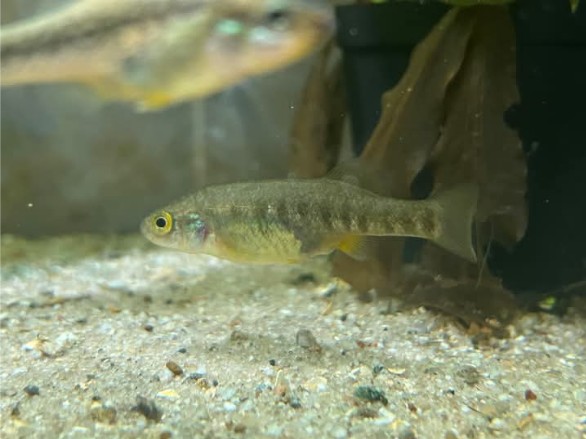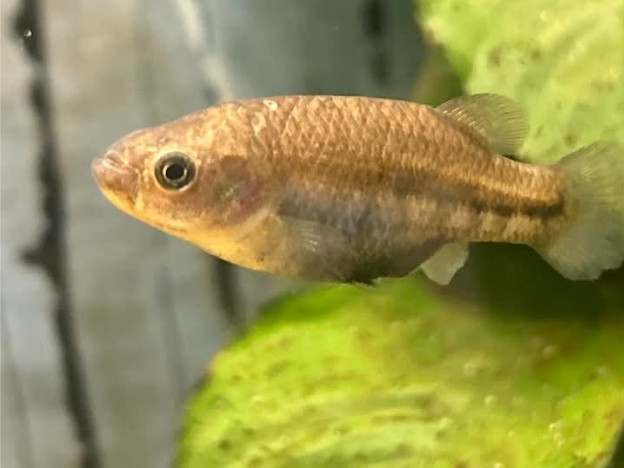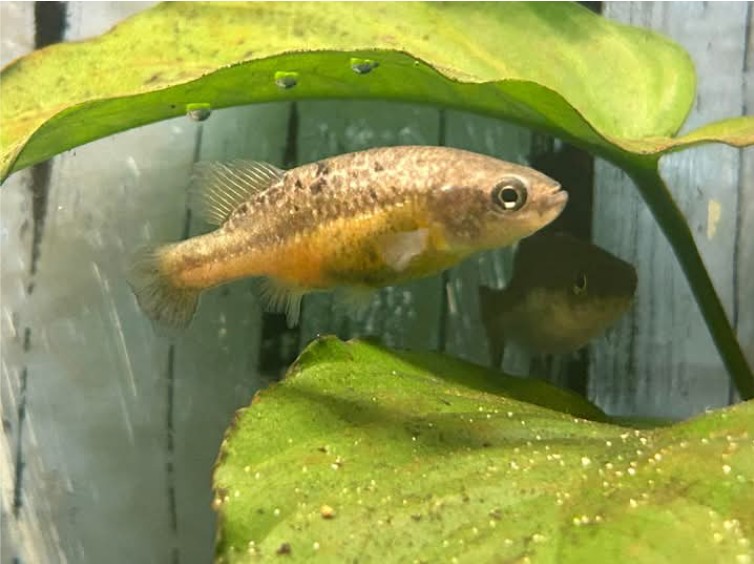Allotoca-Mesa Central, Annual report 2024
Submitted by daniel.elster on 7. February 2025 - 17:48
At the beginning of 2024, 40 participants from 15 countries were represented in the project. However, not all project members are in possession of fish and for some it is also difficult to obtain the figures for the census. Surely everyone has enough other problems to think only about the project work, but we need the figures at least once a year for an overview. At this point, we would like to ask for a little more understanding and support. There are currently 47 members from 16 countries in the project, 9 of whom do not have their own fish.
This means that we can currently only assume 38 active participants, although there are also some keepers with very small populations and we also have concerns about their continued participation. Here, too, we would like to see a little more activity from the participants, as this usually affects the populations that are relatively well represented. It is particularly important to maintain this level here.

Allotoca meeki female, photo: Arjan de Graaf
Current situation of the Allotoca populations in the aquariums
As always, the census started in September and continued until December. This year, the joys and sorrows are equally strong. Most of the weakly established populations were
strengthened, but some strong populations saw a reduction in numbers and the number of holdings. The target of at least 400 animals was only reached by 3 populations, here a permanent stabilization must be ensured, because at least in one of these populations approx. 30% are kept by only 3
(institutional) keepers.
Two populations (A. dugesii) are still not represented in the project.
Here are the results as at 31.12.2024:
BAP subproject
Allotoca catarinae:
After the population consolidated somewhat in 2023, this trend continued in 2024. The number of keepers remained stable at 8, but 3 keepers gave up their holdings and were replaced by new keepers.
The population increased by almost 50% and now stands at 145 animals. A further stabilisation of the population would be desirable and we are still looking for active participants in order to reach the target number of approx. 400 animals.
Allotoca diazi:
Unfortunately, the situation is somewhat different for this species. Officially, the population has decreased from 307 to 277 animals. However, the number of keepers rose from 9 to 11
and so we are at least in positive territory with the target number of keepers of around 10. Let's hope that in 2025 the number of animals will develop towards the mark of at least 400.
Allotoca meeki:
Following the success of the last few years, this species has suffered the greatest losses. The population has fallen from 757 animals to 508. Although this means that we are above the
defined population limit, it is clear to see that large declines can also occur in a short period of time. There are currently 17 participants here, although there has also been a fluctuation in the number of participants.
Allotoca zacapuensis:
We used to have the largest number of keepers here, which is no longer the case with ‘only’ 16 active keepers. 6 keepers have lost or given up their animals this year. However, the
number of animals has risen slightly, with 693 animals in the population compared to 637 previously, thanks in large part to the work of Bristol Zoo, Chester Zoo and Tropiquaria Zoo,
which together account for around 30% of the population. For some keepers, the numbers are alarmingly low and it is to be hoped that they will remain active with this species and ask for a restocking.

Allotoca dugesii „Rancho el Molino“ female, photo: Arjan de Graaf
LANP sub-project
Allotoca dugesii:
For Allotoca dugesii, the situation in 2024 is somewhat more favourable than in 2023. Furthermore, two of four populations, Altdu1-COR-Sant and Altdu4-PAT-RMol, are currently being maintained in the project.
The population of Altdu1-COR-Sant has more than doubled. There are currently 83 animals in 6 holdings in the project.
The greatest progress has been made with Altdu4-PAT-RMol. The number of holdings has doubled to 8 and the number of animals kept has almost quadrupled to 233. This is a really positive success. However, based on the experience gained in recent years, further caution is advised to ensure that these numbers can continue to be maintained.
Allotoca goslinei:
The population of this species was kept fairly stable in the 2024 reporting period. In total, there are currently 426 animals in 16 active holdings. As this species is highly endangered, it is still important not to become reckless in keeping them, despite the good figures. A collapse in the population wouldbe devastating.
There are also signs of a positive development within Plan G. Efforts are being made to return this species to its natural habitat. Hopefully the zoo in Munich and the aquarium in Berlin will join the project. Further information will certainly be available in the near future.
Allotoca maculata:
There was a small success with this species in 2024. The number of holdings increased from 7 to 9 and the fish population almost tripled to 196 animals. Another great success that will hopefully continue in 2025.
Neoophorus regalis:
Furthermore, this species is only present in one enclosure. The population is relatively constant at currently 24 animals. It would be immensely important to distribute the population
among several keepers and increase it significantly.

Allotoca dugesii „Rancho el Molino“, male, photo: Arjan de Graaf
Summary and prospects for 2025
As previously mentioned, it is a problem in the project to request the figures from all owners. We are simply hoping for more activity on this point. The numbers of the individual
populations are for the most part justifiable if you put them in relation to the respective holdings. We would like to see larger and more stable populations, but this always depends on
the capabilities of the participants. We would also like to ask participants with small populations to consider whether they would like to bring their populations back up to a better level by adopting offspring from other participants. At the same time, all keepers should also consider where they have the opportunity to exchange fish. This is always a big question, because often the routes are not easy to find. A good opportunity is always the meetings of the aquarium associations or the GWG. There is certainly enough information about this on the internet and we as project managers try to support this from our side. However, it will not be possible to do this entirely on your own initiative.
For the 2 populations of A. dugesii that are not yet being kept, it would be desirable to be able to continue to integrate stocks into the project. The same goes for increasing the number of Neoophorus regalis populations.
Many thanks for your active co-operation, you are helping to establish a backup population.
Category:
